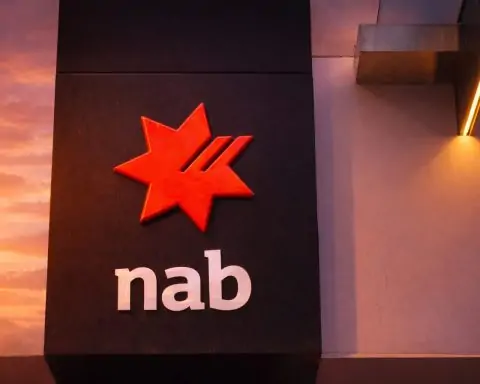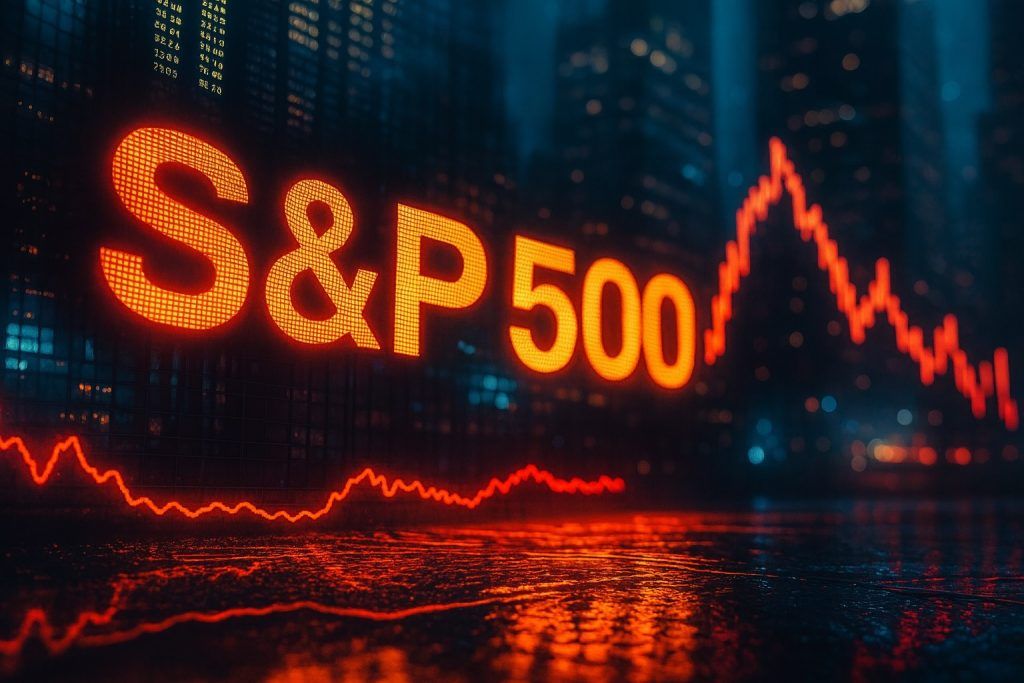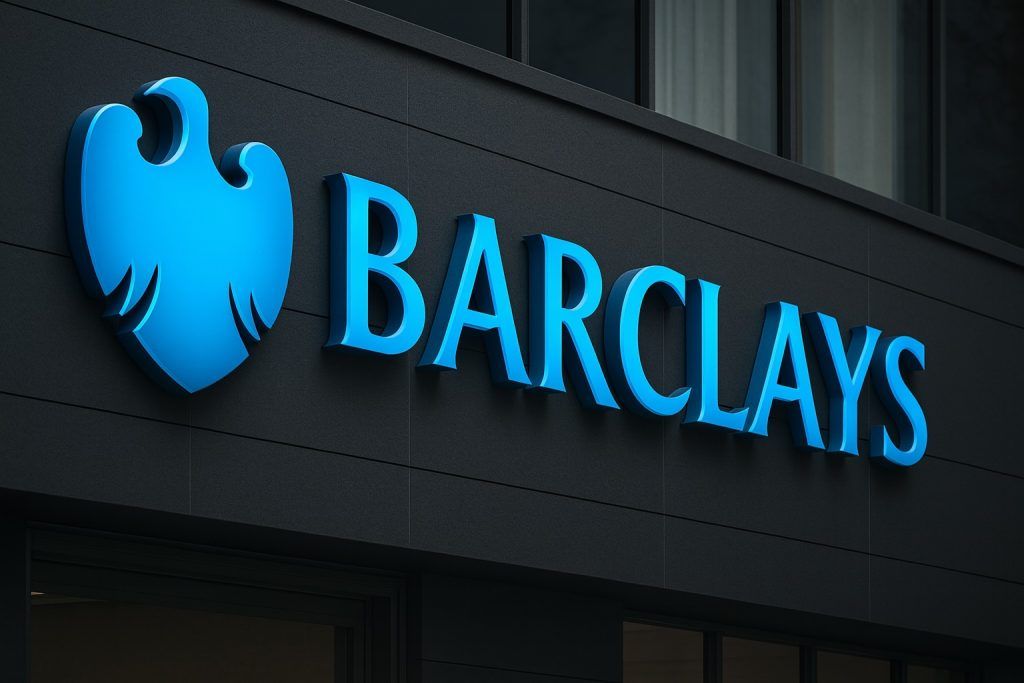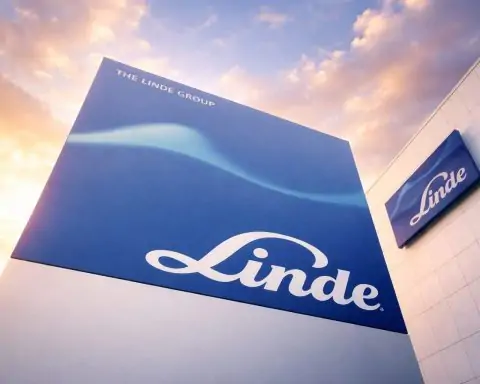- Global stock selloff: Markets worldwide tumbled amid fresh banking worries. On Wall Street, the Dow Jones plunged ~410 points (–0.9%) Thursday while the S&P 500 and Nasdaq fell nearly 1% [1]. Europe’s major indexes also sank ~1–2% and Asian markets turned red, reflecting a broad risk-off mood [2]. Wall Street’s “fear index” (VIX) spiked over 20% to its highest level in months [3] [4].
- Regional bank scare: Two U.S. regional lenders – Zions Bancorp and Western Alliance – shocked investors with disclosures of bad loans and alleged fraud, reviving fears of hidden credit risks [5] [6]. Zions said it will write off $50 million on souring loans, while Western Alliance is suing over a $100 million allegedly fraudulent loan [7]. Their stocks promptly plunged ~10% [8], and the KBW regional bank index sank 6.5% as contagion worries spread. Even investment firm Jefferies fell 10% on exposure to two bankrupt auto lenders [9]. “Where there is smoke, there is often fire,” one analyst warned, as traders fear these issues might not be isolated.
- Safe-haven rush – gold at record: Jittery investors fled to safety. Gold prices rocketed to an all-time high around $4,378/oz [10], after surging ~8.5% this week – the biggest weekly jump since 2008 [11]. Silver also hit a record above $53/oz before pulling back [12]. U.S. Treasury yields plunged as traders piled into bonds; the 2-year yield hit a three-year low (~3.38%) as markets suddenly began pricing in at least two Federal Reserve rate cuts by year-end [13].
- Global ripple effect: Banking jitters in America quickly rippled overseas. Europe’s bank stock index slid ~2.7%, dragging the pan-European STOXX 600 down ~1.8% [14]. Shares of major European lenders like Deutsche Bank and Barclays sank over 5% [15]. In London, nearly every FTSE 100 stock fell on Friday – Barclays dropped 4.7%, Standard Chartered 4.3% [16]. Across Asia, Japan’s Nikkei and Hong Kong’s Hang Seng lost over 1–2% on Friday trading [17]. Fresh U.S.–China trade tensions – including Beijing’s curbs on rare earth metal exports – only added to investors’ anxiety [18].
- “Cockroach” warnings & outlook: The scare has traders flashing back to 2023’s bank turmoil. JPMorgan CEO Jamie Dimon cautioned this week that “when you see one cockroach, there’s probably more,” after revealing his bank took a $170 million loss on a collapsed lender [19]. Analysts worry the quick fixes that halted the 2023 regional banking panic may have only papered over deeper problems, leaving “a tinderbox for another banking flare-up,” as IG Markets’ Tony Sycamore put it [20]. Indeed, the latest issues emerged on the heels of last month’s bankruptcy of subprime auto lender Tricolor and the sudden collapse of auto-parts supplier First Brands – early warning signs of credit stress in niche finance [21]. Experts say investors are now laser-focused on banks’ loan quality and any further “cockroaches” lurking off balance sheets. Still, hope persists that swift Fed rate cuts and strong corporate earnings could stabilize markets. Veteran economist Jeremy Siegel argues cooling inflation and a not-too-hot economy give the Fed a “recipe” to keep easing – and that stocks can weather slower growth if price pressures keep abating [22]. In fact, Goldman Sachs even raised its year-end S&P 500 target to ~6,800 recently, citing the Fed’s dovish pivot and resilient earnings outlook [23]. But for now, uncertainty reigns as investors brace for more volatility amid this growing “wall of worry.”
Banking Scare Sparks Global Selloff
A new bout of credit jitters is roiling global markets, sparked by trouble at a pair of midsize U.S. banks. On Thursday, Utah-based Zions Bancorporation and Phoenix-based Western Alliance Bancorp revealed they face hefty losses on problematic loans – including a $50 million charge-off at Zions and a $100 million bad loan at Western tied to alleged borrower fraud [24]. While relatively small banks (each under $10 billion market cap), the revelations sent shockwaves through the financial sector. “The event drew inevitable comparisons to the regional bank stress that followed the collapse of Silicon Valley Bank (SVB) in 2023,” noted Deutsche Bank strategist Jim Reid, “[and] raised broader questions over potential credit quality issues after a lengthy period of elevated rates and expansion in private credit” [25].
Investors wasted no time dumping financial stocks. Regional bank shares cratered, with Zions stock sinking about 12% and Western Alliance down 10% by day’s end [26]. The damage wasn’t confined to banks: brokerage firm Jefferies fell roughly 10% after disclosing exposure to two recently bankrupt auto lenders [27]. In total, over 80% of S&P 500 stocks closed in the red Thursday as the sell-off broadened [28]. Key indexes shed nearly 1% or more – the Dow plunged ~410 points, while the S&P 500 and Nasdaq each lost just under 1% [29]. It was Wall Street’s worst day in weeks, and volatility spiked markedly. The CBOE VIX index – often called the market’s “fear gauge” – jumped about 22% to its highest closing level since April, then rose further on Friday [30].
Crucially, this rout is not happening in a vacuum. It comes on the heels of mounting concern over hidden risks in credit markets. Last month, subprime auto lender Tricolor Holdings collapsed into bankruptcy, and a major auto parts supplier First Brands Group filed Chapter 11 amid allegations of opaque financing and heavy debts [31]. Those surprises have put a spotlight on the $2 trillion leveraged loan and private credit market. “Investors [now] worry that the abrupt collapse of First Brands is an early sign of trouble,” reported the Financial Times, as even senior loan holders were blindsided by the company’s complex off-balance-sheet borrowing [32]. The fact that JPMorgan had to absorb a $170 million hit from Tricolor’s failure – despite extensive due diligence – has clearly rattled nerves [33].
Earlier this week, JPMorgan chief Jamie Dimon offered a vivid analogy: “when you see one cockroach, there’s probably more.” He warned that the recent flare-ups in obscure corners of lending could herald deeper, hidden problems in the financial system [34]. In other words, if a few bad loans are surfacing now, there may be others lurking out of sight. Traders have taken that caution to heart. “Credit concerns have put the market in de-risking mode,” one strategist observed, noting how quickly investors are unloading anything remotely exposed to credit risk.
Gold Hits Record High as Investors Flee to Safety
With bank worries mounting, safe-haven assets are seeing a tidal wave of demand. Top of the list: gold. The price of gold blasted to a fresh record high around $4,379 per ounce – a level never seen before [35]. It’s been an astonishing run. The precious metal is up roughly 60% year-to-date [36], and gained about 8% just this week [37], marking gold’s steepest weekly climb since the 2008 financial crisis [38]. “Gold has been on a tear,” says analyst Fawad Razaqzada, as anxious investors snap it up as *“insurance” against all manner of risks – from banking stresses to geopolitical strife [39].
Silver has been soaring in gold’s slipstream. The “poor man’s gold” shot to an all-time high above $53.60/oz this week, finally surpassing its 1980 and 2011 record peaks [40]. Both metals have vastly outperformed stocks in 2025 – silver is up an eye-popping ~70–80% year-to-date, versus ~15% for the S&P 500 [41]. Part of silver’s surge owes to a unique supply crunch (an acute shortage of physical silver in trading hubs), but the overarching driver for both gold and silver is fear and uncertainty.
Several converging factors are feeding this safe-haven frenzy. First, traders now expect central banks to pivot toward monetary easing to calm the turmoil. In the U.S., Treasury bonds have rallied sharply (driving yields lower) on bets that the Federal Reserve will cut rates to support the economy. The two-year U.S. Treasury yield plunged to ~3.38% – its lowest in three years – as markets priced in at least two Fed rate cuts by the end of 2025 [42]. Even the 10-year yield, which recently hit multi-year highs, fell back under 4% amid the flight to safety [43]. Expectations of imminent Fed easing make non-yielding assets like gold more attractive, and a softer interest rate outlook tends to weaken the dollar – another plus for gold prices [44].
Second, geopolitical and political risks are escalating, adding to investors’ jitters. This week saw U.S.–China tensions rise after Beijing moved to curb exports of critical rare earth metals, a counter-strike in the ongoing trade and tech war [45]. Meanwhile, in Washington, a government shutdown looms with no resolution in sight, and turmoil in the Middle East and Europe is adding to the global uncertainty. “Renewed trade frictions… are adding to uncertainty… investors are increasingly turning to gold,” notes Nitesh Shah of WisdomTree, who believes gold’s breakout above $4,200 is likely to hold barring a major shift in the outlook [46] [47].
Looking ahead, many experts see further upside for bullion. Bank of America now projects gold could reach $5,000 per ounce by 2026, and some analysts think it may not take that long [48]. “Gold could easily continue its upward momentum… north of $5,000 by the end of 2026,” says Phillip Streible, chief market strategist at Blue Line Futures, citing the metal’s strong technical momentum and safe-haven appeal [49]. And if macro risks intensify, the milestone might come even sooner. Zain Vawda of OANDA suggests that if U.S.-China tensions worsen, gold could hit ~$5,000/oz in the nearer term as investors flock to safety [50]. To be sure, not everyone is unabashedly bullish – some warn that gold and silver have run “hot” and could see pullbacks. But so far in 2025, any dips have been shallow as the wall of worry keeps pushing more capital into precious metals.
Flashbacks to 2023: “More Cockroaches” and Credit Risks
For many market veterans, this week’s banking scare feels like déjà vu. It was only last year that a string of U.S. regional banks – from Silicon Valley Bank to First Republic – imploded in a panic, forcing regulators to mount emergency rescues. The spark then was rapid interest-rate hikes causing big losses on banks’ bond portfolios, triggering depositor runs. This time, the stressors are a bit different – loan losses and alleged fraud in pockets of the credit market – but the underlying fear is the same: that one leak might be a sign of a bigger flood.
The phrase on everyone’s lips comes from JPMorgan’s Jamie Dimon: “there’s probably more cockroaches out there.” In other words, if a couple of regional banks are suddenly disclosing surprise losses on bad loans, who’s next? Notably, the issues at Zions and Western Alliance seem linked to niche lending segments – reportedly, some of the troubled loans were tied to commercial real estate funds and other high-risk borrowers [51]. That raises the specter of broader problems in areas like real estate debt, private credit funds, or other leveraged loans that have boomed in recent years. “Most of the growth in global lending has occurred in private credit, followed by high-yield bonds and leveraged loans,” Goldman Sachs President John Waldron pointed out, warning that a wave of defaults in that $5 trillion shadow lending arena could “trigger widespread financial instability” if things turn south [52] [53].
The recent high-profile busts in the credit world underscore those concerns. Tricolor Holdings, which catered to subprime auto borrowers, went bankrupt in September amid accusations of fraud. Shortly after, First Brands Group – a large auto-parts maker backed by complex financing deals – collapsed under $12 billion of debt [54]. These were not tiny upstarts; their failures inflicted real pain on lenders and investors. JPMorgan’s $170 million hit from Tricolor’s demise was one example [55]. Japanese bank Nochu (Norinchukin) reportedly faces losses from First Brands’ loans [56]. In that context, this week’s revelations from Zions and Western Alliance feel less like isolated blips and more like part of a pattern of credit cracks emerging after years of easy money. “While the recent issues… seem well contained, where there is smoke there is often fire,” said IG Markets’ Tony Sycamore, adding that the quick 2023 fixes may have left “a tinderbox for another banking flare-up” down the road [57]. Memories of last year’s bank runs have left investors “hypersensitive to any hint of credit stress,” he noted, so even relatively small loan problems now can send outsized shockwaves [58].
Regulators are watching closely. Federal Reserve officials have generally argued that the banking system is well-capitalized and resilient. But the IMF’s chief, Kristalina Georgieva, admitted recently that risks in the booming private credit market “keep [her] awake at night,” given its rapid growth and lack of transparency. And Goldman’s John Waldron did not mince words: “If things go badly, defaults will not be good news… Everyone in the financial system will feel the impact,” he said in a Bloomberg forum [59] [60]. In other words, the lines between “shadow” lenders and traditional banks have blurred – a credit blowup anywhere could hit the whole system. No wonder markets reacted so strongly to a couple of regional bank hiccups; traders are essentially shooting first and asking questions later when it comes to anything that smells of credit risk.
“Wall of Worry” – Experts Weigh Risks and Hopes
Even before this week’s scare, investors were grappling with a laundry list of worries. “There are increasing signs of storm clouds gathering over markets, with little relief from the building wall of worry,” said Richard Hunter, head of markets at Interactive Investor [61]. He noted that stocks were already contending with stretched valuations – especially in this year’s high-flying AI tech sector – as well as an unresolved U.S. government shutdown standoff and a deteriorating U.S.–China relationship [62]. Layer on the new bank credit concerns, and it’s a lot for investors to digest.
Indeed, the recent rally in tech stocks has left parts of the market looking frothy. The Nasdaq jumped over 30% in 2025 fueled by AI euphoria, and price/earnings multiples for many tech high-fliers have ballooned. Earlier this month, the Bank of England cautioned that equity valuations — “particularly for technology companies focused on AI” — appear unsustainably high, warning of a potential “sudden correction” if lofty growth expectations falter [63]. This week’s pullback in stocks may partly reflect those valuation jitters finally catching up with the market. “Already grappling with [an] AI valuation bubble, [and] an unresolved shutdown, investors were exposed to a new source of concern in the form of lending practices and bad loans,” as Hargreaves Lansdown analyst Derren Nathan observed [64] [65]. In his view, despite rising hopes that the Fed will cut rates again this year, the focus is shifting to the underlying health of the economy now that America’s regional banks are revealing credit losses [66]. In short, cheap money might be coming back, but it can’t fix a credit quality problem overnight.
That said, it’s not all doom and gloom. A number of market watchers still believe the bull case isn’t broken – it’s just being tested. With inflation trending lower and growth moderating, many expect the Federal Reserve to step in with interest rate relief if turmoil worsens. The Fed already delivered its first rate cut in September, and futures markets are pricing a high probability of another cut at the upcoming October 28–29 meeting [67]. Fed officials themselves are hinting at a dovish turn: Governor Christopher Waller said he “supports” an October rate cut, citing easing inflation and the need to insure against downside risks [68]. Easier monetary policy could provide a cushion for stocks and credit markets – essentially re-adding liquidity to address liquidity-driven stress.
Market bulls also point to solid corporate earnings and resilient consumer demand as reasons to believe any correction will be short-lived. “Cooling inflation and a not-too-hot, not-too-cold economy are a recipe for the Fed to continue easing,” argues Wharton professor and longtime commentator Jeremy Siegel, who suggests equities can “weather slower growth if price pressures keep abating.” [69] In fact, some big investors view the recent dip as an opportunity. Goldman Sachs analysts this week raised their year-end target for the S&P 500 to ~6,800 (implying further upside) on the expectation that the Fed’s supportive pivot and robust company profits will prolong the bull run [70]. To be sure, that call came before the latest flare-up of bank fears, but it underscores that not everyone expects a crash – some see the market climbing the wall of worry once the dust settles.
For the moment, however, caution reigns. The dramatic move into gold, the spike in volatility, and the sharp sell-off in bank shares all point to a market in risk-aversion mode. As one London trader remarked, “investors are watching this like hawks for any sign of another domino about to drop.” It’s a delicate balance: if the bank worries fade with no further incidents, focus could quickly return to positive drivers like Fed rate cuts, innovation in tech, and year-end seasonal strength. But if “more cockroaches” emerge – be it another lender revealing losses or other surprise defaults – the current pullback could deepen into something more severe. As Richard Hunter put it, for now the market must contend with “a wall of worry” – and it just got one brick taller [71].
Sources: Recent reporting from The Guardian [72] [73] [74], Financial Times [75] [76], Reuters (via TS2) [77] [78], Bloomberg [79] [80], TS2 TechStock² news analysis [81] [82], and expert commentary [83].
References
1. ts2.tech, 2. www.theguardian.com, 3. ts2.tech, 4. www.theguardian.com, 5. www.theguardian.com, 6. www.theguardian.com, 7. www.theguardian.com, 8. www.theguardian.com, 9. ts2.tech, 10. www.theguardian.com, 11. www.theguardian.com, 12. ts2.tech, 13. ts2.tech, 14. ts2.tech, 15. ts2.tech, 16. www.theguardian.com, 17. www.theguardian.com, 18. ts2.tech, 19. ts2.tech, 20. ts2.tech, 21. www.theguardian.com, 22. ts2.tech, 23. ts2.tech, 24. www.theguardian.com, 25. www.theguardian.com, 26. ts2.tech, 27. ts2.tech, 28. ts2.tech, 29. ts2.tech, 30. www.theguardian.com, 31. www.theguardian.com, 32. www.ft.com, 33. www.nationthailand.com, 34. ts2.tech, 35. ts2.tech, 36. ts2.tech, 37. www.theguardian.com, 38. www.theguardian.com, 39. ts2.tech, 40. ts2.tech, 41. ts2.tech, 42. ts2.tech, 43. ts2.tech, 44. ts2.tech, 45. ts2.tech, 46. ts2.tech, 47. ts2.tech, 48. ts2.tech, 49. ts2.tech, 50. ts2.tech, 51. www.nationthailand.com, 52. www.nationthailand.com, 53. www.nationthailand.com, 54. www.ft.com, 55. www.nationthailand.com, 56. www.ft.com, 57. ts2.tech, 58. ts2.tech, 59. www.nationthailand.com, 60. www.nationthailand.com, 61. www.theguardian.com, 62. www.theguardian.com, 63. ts2.tech, 64. www.theguardian.com, 65. www.theguardian.com, 66. www.theguardian.com, 67. ts2.tech, 68. ts2.tech, 69. ts2.tech, 70. ts2.tech, 71. www.theguardian.com, 72. www.theguardian.com, 73. www.theguardian.com, 74. www.theguardian.com, 75. www.theguardian.com, 76. www.theguardian.com, 77. ts2.tech, 78. ts2.tech, 79. www.theguardian.com, 80. ts2.tech, 81. www.theguardian.com, 82. ts2.tech, 83. ts2.tech










